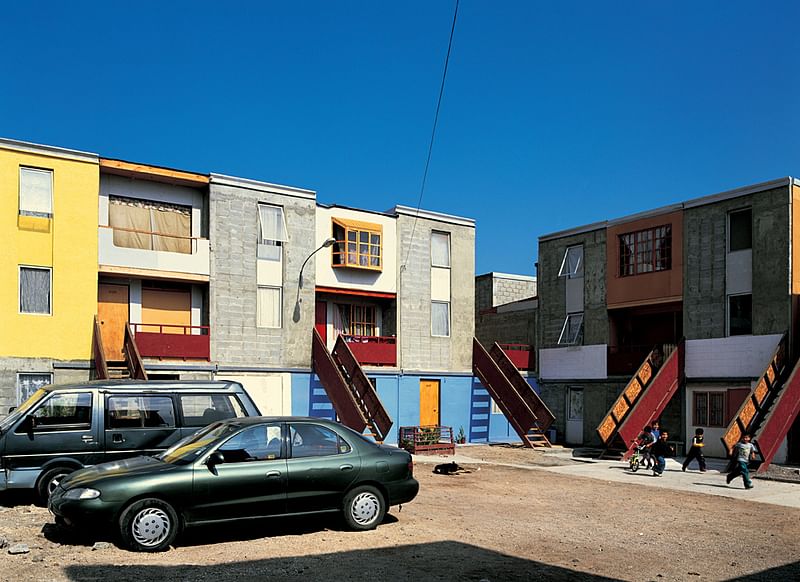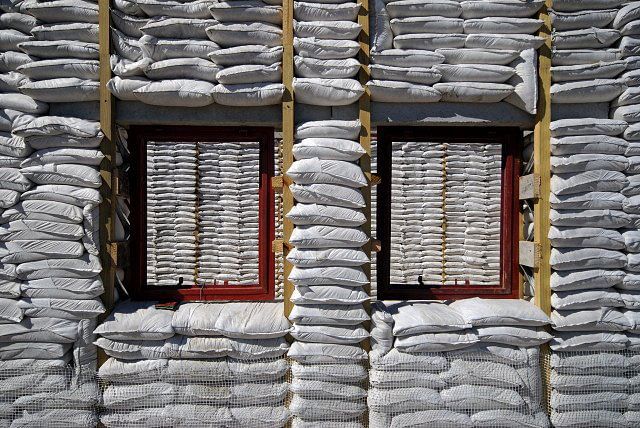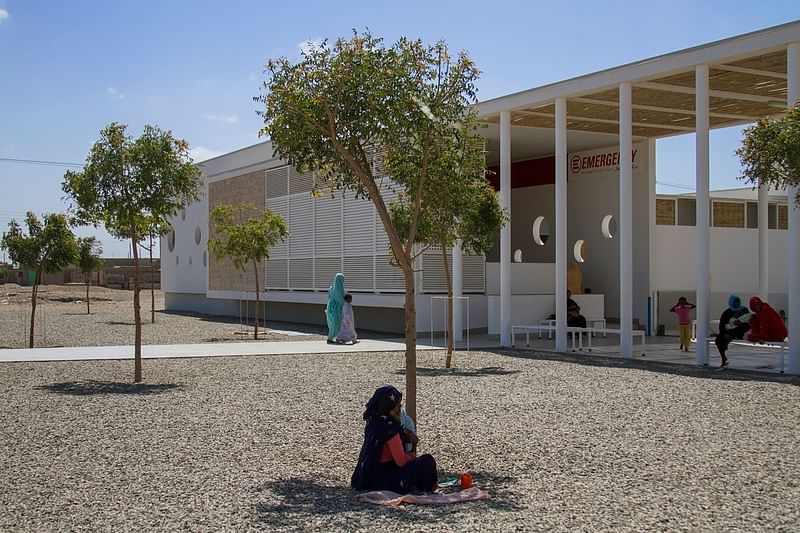Six Curry Stone-winning designers to be featured in 2016 Venice Biennale exhibition
By Justine Testado|
Wednesday, May 25, 2016

Related
Six previous Curry Stone Design Prize winners will be in the international spotlight once again in a special exhibition at the 2016 Venice Biennale, which opens very soon on May 28. The exhibition fits right into the Biennale's humanitarian-focused 2016 theme “Reporting from the Front”. Under the direction of Curator Alejandro Aravena, the Biennale's theme aims to bring some of the biggest global issues — like lack of affordable housing, access to healthcare, sanitation, forced migration, natural disasters, segregation, and more — to the center of architectural discourse.
The exhibition will highlight some of the social-design work that these Curry Stone-winning architects and their collaborators are doing to bring awareness and help alleviate such issues. You'll find the winning projects by Rural Urban Framework, Luyanda Mpahlwa, Alejandro Aravena's practice Elemental, Studio Anna Heringer, Studio TAMassociati, and Antonio Scarponi.
“As the issues of disaster, mass migration and climate change continue to present greater and greater challenges for humanity, designers are uniquely situated to respond, and nowhere is that belief better embodied than in the work of past Prize winners”, said Curry Stone Design Prize Director Emiliano Gandolfi in a statement.
If you didn't catch these projects the first time around, you can read a little more about them below.

Elemental | Santiago, Chile
“In 2003, Elemental received a tough commission from the Chilean government: Transform Quinta Monroy, a shantytown in the desert city of Iquique, by resettling 100 families on the same 1.25-acre site they had illegally occupied for 30 years. The budget for the new housing units? About $7,500 per unit, including land, services, and construction...In response, the self-described ‘Do Tank’ designed a traditional row house that would provide the density the site required while allowing the residents to have both privacy and the space to expand their homes as their families grew (two perks public housing projects rarely provide). Instead of building very cheaply made homes, the team created a model that was 50-percent self-built.”

Antonio Scarponi | Zurich, Switzerland
“Antonio Scarponi uses elements from architecture, multimedia arts, and design to “jam” the conventional social order...His 2007 interactive project “Dreaming Wall,” installed in an historic Milanese square, was a digitally generated billboard that displayed randomly chosen real-time text messages sent to the projector by people from across the world...Recently, Scarponi has been investigating ways to assemble cheap, readily available materials into useful, sustainable household items...”

Anna Heringer | Vienna, Austria
“In Bangladesh, where western-influenced structures have gained favor among the growing middle class, Anna Heringer’s designs offer sustainable alternatives to the trend toward cement and steel buildings. Her village schools and single-family homes combine local materials with modern building techniques and are constructed by local people, without machinery or outside markets. Heringer’s designs reaffirm that progress can be ecologically sensitive and support local craftsmanship.”

Luyanda Mpahlwa | Cape Town, South Africa
“Luyanda Mpahlwa is part of the vanguard of new designers who are reshaping and re-envisioning South Africa’s post-apartheid architectural landscape...Mpahlwa, the creative director for the project, made the decision to replace traditional brick-and-mortar foundations with a less costly two-story structural frame made from timber combined with sandbag construction as fill for the walls. The design borrows from indigenous, mud-and-wattle building techniques that keep homes cool in summer and warm in winter...Building of the house turned into a community project, with local women pitching in. Several Freedom Park families now live in new two-story homes with built-in terraces and private gardens—a major step up from their old one-room tin shacks.”

Studio TAMassociati/Emergency | Venice, Italy
“The decade-long collaboration [between non-profit architecture firm Studio TAMassociati and Italian NGO Emergency] has resulted in a replicable model for free, high-quality healthcare and educational facilities in the Sudan, Sierra Leone, the Central African Republic, Iraq, and Afghanistan. Together, TAM and Emergency have built five hospitals on the African continent, facilities that have treated more than 700,000 patients. In addition, as an extension of their efforts to treat civilians affected by war, they have collaborated on seven clinics in Italy—four of which are mobile units—to provide healthcare to refugees...TAM and Emergency bring cutting-edge healthcare facilities and architecture into areas where there are none.”

Rural Urban Framework | Hong Kong
“Rural Urban Frameword (RUF) is a research and design collaborative that is working to help recover and rebuild villages across China that have been affected by the massive rural-to-urban migrations. Founded in 2006, the research collaborative uses design strategies to transform the hollowed-out cities and burgeoning urban sprawl created by this exodus. By engaging inhabitants in the design process and integrating with the built and natural environment, RUF has completed successful projects in 18 communities across China. The scale of the projects ranges from small interventions...to the post-disaster reconstruction of an entire village.”
Check out some of the most recent Curry Stone Design Prize winners below.

RELATED NEWS 2016 Curry Stone Design Prize awarded to SPARC, housing rights advocate for India's urban poor

RELATED NEWS Curry Stone Design Prize goes to Rural Urban Framework for revitalizing China's shrinking villages


Share
0 Comments
Comment as :